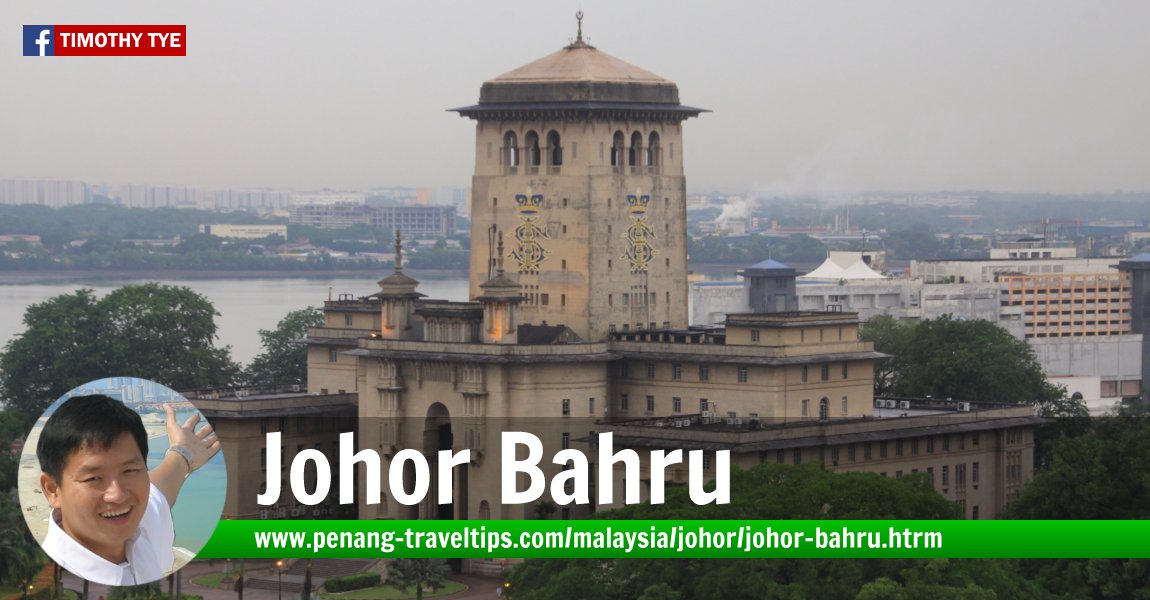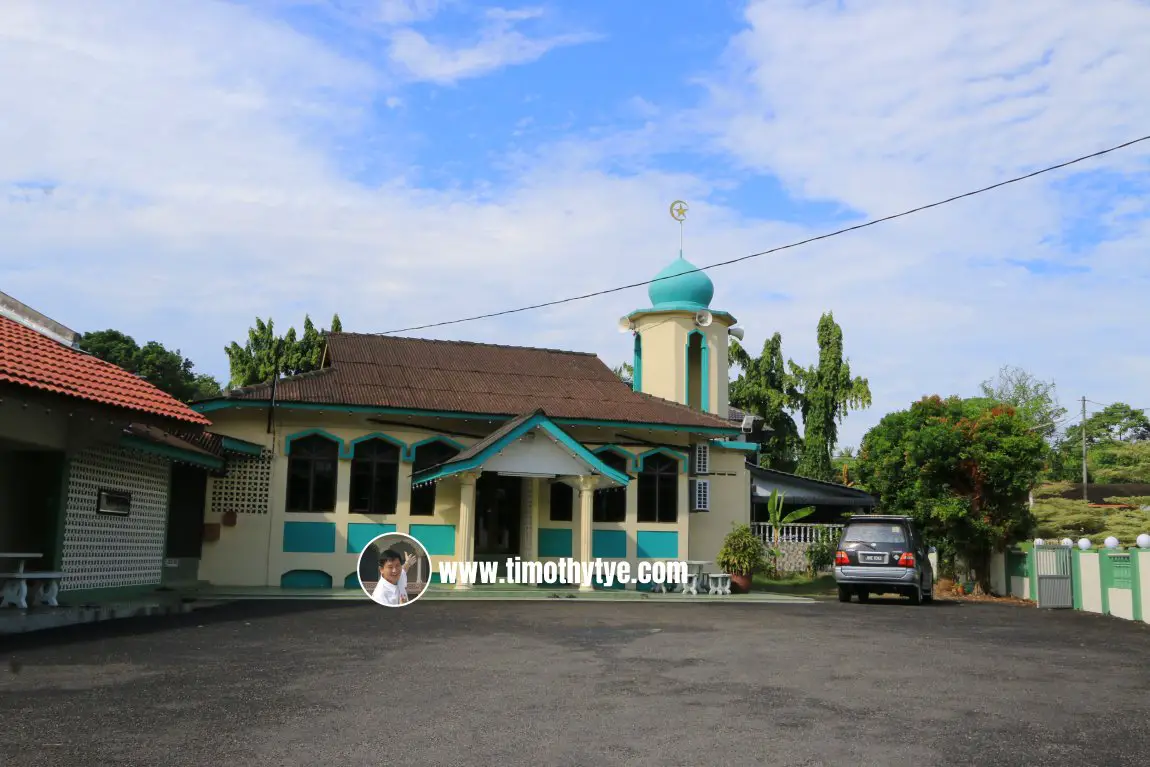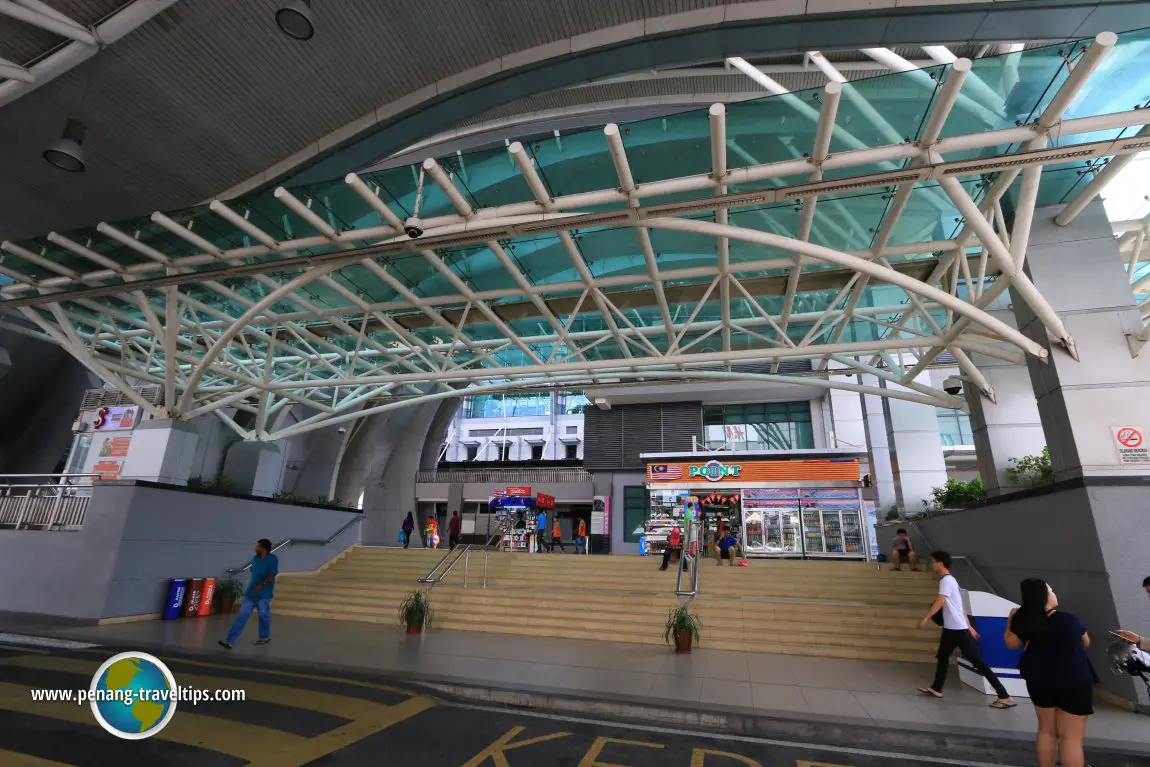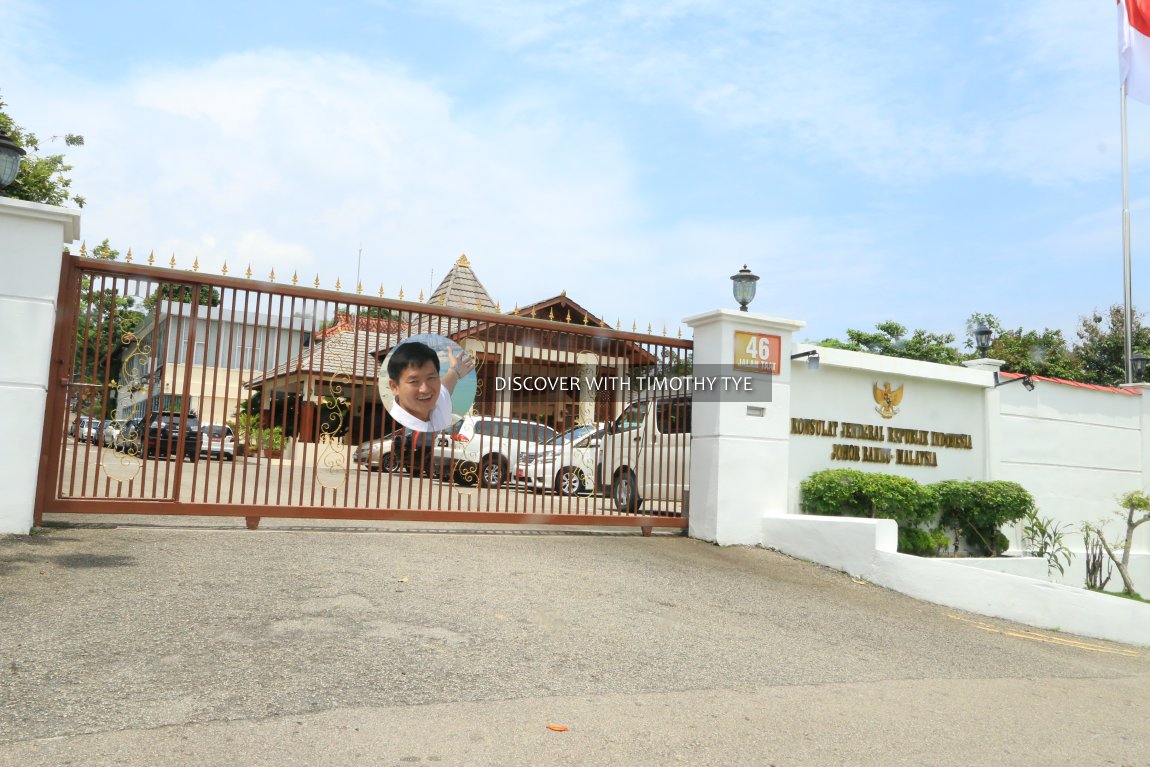 Johor Bahru Travel Tips
Johor Bahru Travel Tips
[an error occurred while processing this directive]
 Johor Bahru, Johor, Malaysia (16 September, 2016)
Johor Bahru, Johor, Malaysia (16 September, 2016)
B. Melayu
Johor Bahru (GPS: 1.48848, 103.75762), (Jawi: جوهر بهرو; Chinese: 新山; Pinyin: Xīnshān; Hokkien: Sin3snua1/Sin3san1; Tamil: ஜொகூர் பாரு) is the capital as well as largest city in Johor. It also serves as the administrative centre for Johor Bahru District. Popularly abbreviated as JB, Johor Bahru has a population of approximately 500,000 and a metropolitan area with 1.8 million inhabitants, making it the third largest city1 in Malaysia and one of the fastest growing in Southeast Asia.
Discover Johor Bahru with Timothy Tye is a comprehensive guide created to help you plan what you get to know and enjoy your visit to this state capital of Johor. All its sights is described here in detail, with GPS coordinates to help you find your way to each of them.
Where to stay when in Johor Bahru
When asked where to stay, I usually suggest only hotels where I myself have stayed before and experienced their hospitality. For Johor Bahru, my suggestion includes Grand Paragon Hotel, KSL Resort and The Puteri Pacific Johor Bahru.Map of Johor Bahru
What to eat in Johor Bahru
- Kedai Makanan dan Minuman Lok Tian (GPS: 1.56974, 103.74356; Street View), Jalan Perjiranan 15/1, Taman Dato Onn, Johor Bahru, recommended by Chan Sun on 25 August, 2019
- Ah Hua Kway Teow Tasty Chinese flat rice noodle soup, non halal (GPS: 1.45811, 103.76432)
 , recommended by Tim
, recommended by Tim - Hiap Joo Bakery Not a restaurant, but bakery famous for its banana cakes (GPS: 1.45671, 103.76441)
 , recommended by Tim
, recommended by Tim - IT Roo Cafe Cafe that is famous for its chicken chop. (GPS: 1.45682, 103.76358)
 , recommended by Tim
, recommended by Tim - Kam Long Curry Fish Head Restaurant Delicious curry fish head, non halal (GPS: 1.45925, 103.76486)
 , recommended by Tim
, recommended by Tim - Salahuddin Bakery Bakery that is famous for its Benggali loaves. (GPS: 1.45696, 103.76343)
 , recommended by Tim
, recommended by Tim
Recommended hotels in Johor Bahru
- The Puteri Pacific Johor Bahru Hotel in downtown Johor Bahru, within convenient distance from the city sights. (GPS: 1.46107, 103.76221)

Places of Interest in Johor Bahru
- Arulmigu Rajamariamman Devasthanam Temple Main Hindu temple in downtown Johor Bahru. (GPS: 1.45924, 103.76399)

- Bangunan Sultan Ibrahim One of the main historical landmarks of Johor Bahru. (GPS: 1.45782, 103.76114)

- Arulmigu Sri Rajakaliamman Temple The famous Glass Temple of Johor Bahru. (GPS: 1.46862, 103.75968)

- Church of the Immaculate Conception The main Roman Catholic church, located in downtown Johor Bahru. (GPS: 1.4652, 103.75885)

- Johor Bahru Old Chinese Temple The oldest Chinese temple in Johor Bahru. (GPS: 1.46055, 103.76313)

Sights in Johor Bahru
- AEON Big Johor Bahru (GPS: 1.53686, 103.78434)

- AEON Big Sutera Mall (GPS: 1.51734, 103.67145)

- AEON Bukit Indah (GPS: 1.48218, 103.65619)

- AEON Tebrau City (GPS: 1.54921, 103.79608)

- Country Garden Danga Bay (GPS: 1.46327, 103.73073)

- Danga City Mall (GPS: 1.47437, 103.75538)

- Dataran Bandaraya Johor Bahru (GPS: 1.4603, 103.74122)

- Galleria at Kotaraya (GPS: 1.45932, 103.76314)

- Giant Hypermarket Leisure Mall (GPS: 1.45932, 103.76314)

- Giant Hypermarket Plentong (GPS: 1.52858, 103.81524)

- Giant Hypermarket Pulai Utama & U-Mall (GPS: 1.54635, 103.62235)

- Giant Hypermarket Southern City (GPS: 1.50408, 103.76089)

- Giant Hypermarket Tampoi (GPS: 1.50025, 103.70007)

- Grand Paragon Hotel (GPS: 1.45811, 103.76432)

- Gurdwara Sahib Johor Bahru (GPS: 1.45964, 103.7638)

- Holiday Plaza (GPS: 1.50025, 103.70007)

- Holy Light Church (GPS: 1.46508, 103.75744)

- Hospital Sultan Aminah (GPS: 1.45812, 103.74577)

- Hospital Sultan Ismail (GPS: 1.54918, 103.7901)

- Hutan Bandar Municipal Park (GPS: 1.51151, 103.63262)

- IKEA Tebrau (GPS: 1.55447, 103.79864)

- Istana Besar/Royal Abu Bakar Museum (GPS: 1.455, 103.75635)

- Istana Bukit Serene (GPS: 1.47981, 103.72624)

- Istana Pasir Pelangi (GPS: 1.48353, 103.78612)

- J.A. Residence Hotel (GPS: 1.45788, 103.76566)

- Jay Hotel (GPS: 1.45894, 103.7658)

- JB Sentral (GPS: 1.4631, 103.76464)

- Johor Bahru City Square (GPS: 1.46163, 103.7638)

- Johor Bahru Post Office (GPS: 1.45612, 103.76196)

- Johor Bahru Syariah Court (GPS: 1.45777, 103.74843)

- Johor Jaya Chinese Cemetery (GPS: 1.53953, 103.78957)

- Johor Tourist Information Centre (GPS: 1.45671, 103.75969)

- Komtar (GPS: 1.46385, 103.76302)

- Konsulat Republik Indonesia (GPS: 1.47012, 103.75582), 46, Jalan Taat, 80100 Johor Bahru; phone: 07-227 4188

- Kota Iskandar (GPS: 1.42224, 103.64825)

- KSL Resort, KSL City Mall & Tesco KSL City (GPS: 1.48469, 103.76282)

- Legoland Malaysia (GPS: 1.45714, 103.76336)

- Lido Beach (GPS: 1.45696, 103.747)

- Lot 1 JB Waterfront City (GPS: 1.45366, 103.75856)

- Majlis Bandaraya Johor Bahru (GPS: 1.45588, 103.76153)

- Masjid India (GPS: 1.45714, 103.76336)

- Masjid Jamek Batu 10 (GPS: 1.54089, 103.65802)

- Masjid Sultan Abu Bakar (GPS: 1.4569, 103.75118)

- Masjid Tunku Laksamana Abdul Jalil (GPS: 1.47474, 103.76485)

- Meldrum Hotel (GPS: 1.45907, 103.76543)

- Menara Ansar (GPS: 1.46029, 103.76283)

- Menara Landmark (GPS: 1.46531, 103.75975)

- Merlin Tower (GPS: 1.46038, 103.76514)

- Midas Mart (GPS: 1.53607, 103.78316)

- Muzium KTMB (GPS: 1.46107, 103.76533)

- Muzium Tokoh Johor (GPS: 1.47235, 103.76548)

- Pasar Borong Tebrau (GPS: 1.52419, 103.76647)

- Pelangi Leisure Mall (GPS: 1.48403, 103.77454)

- Perling Mall (GPS: 1.49658, 103.68107)

- Plaza Angsana (GPS: 1.49611, 103.70633)

- Port of Tanjung Pelepas (GPS: 1.36349, 103.5526)

- Pulau Danga Bayu (GPS: 1.47762, 103.70958)

- Pusat Islam Iskandar (GPS: 1.45806, 103.75008)

- Renaissance Johor Bahru (GPS: 1.49573, 103.81261)

- Senai International Airport (GPS: 1.6357, 103.66565)

- seventh-Day Adventist Church (GPS: 1.46281, 103.75022)

- SK Infant Jesus Convent (GPS: 1.46503, 103.75494)

- Skudai Parade (GPS: 1.54171, 103.66001)

- Sky Habitat @ Meldrum Hills (GPS: 1.46206, 103.76936)

- Skysuites @ Meldrum Hills (GPS: 1.46223, 103.77106)

- St Christopher's Anglican Church (GPS: 1.4633, 103.75151)

- Stulang Laut Beach (GPS: 1.46951, 103.78163)

- Sultan Iskandar CIQ Complex (GPS: 1.46537, 103.76666)

- Tadika Holy Light (GPS: 1.46545, 103.758)

- Tesco Bukit Indah (GPS: 1.48233, 103.66297)

- Tesco Extra Desa Tebrau (GPS: 1.54789, 103.79355)

- Tesco Extra Plentong (GPS: 1.52212, 103.81483)

- Tesco Sri Alam (GPS: 1.49708, 103.86906)

- The Astaka @ One Bukit Senyum (GPS: 1.47357, 103.76443)

- The Store Pandan (GPS: 1.53109, 103.78247)

- Tian Hou Gong Skudai (GPS: 1.53706, 103.66024)

- Tropicana Danga Bay (GPS: 1.47904, 103.72332)

- UTM (Universiti Teknologi Malaysia) (GPS: 1.55746, 103.63746)

- V@Summerplace (GPS: 1.4625, 103.77014)
- Wisma Daiman (GPS: 1.53686, 103.78434)

- Wisma Tiong-Hua (GPS: 1.48683, 103.76969)

- Zoo Johor (GPS: 1.4572, 103.75288)

Places in Johor Bahru
Category of sights in Johor Bahru
- PLACES IN JOHOR BAHRU
- AEON Malls & AEON Big in Johor Bahru
- Bakeries in Johor Bahru
- Cemeteries in Johor Bahru
- Chinese Temples in Johor Bahru
- Churches in Johor Bahru
- Coffee Shops in Johor Bahru
- Condominiums in Johor Bahru
- Country Clubs in Johor Bahru
- Giant Hypermarkets in Johor Bahru
- Government Buildings in Johor Bahru
- Highways in Johor Bahru
- Hindu Temples in Johor Bahru
- Historic Buildings in Johor Bahru
- Hospitals in Johor Bahru
- Hotels in Johor Bahru
- Markets in Johor Bahru
- Mosques in Johor Bahru
- Museums in Johor Bahru
- Palaces in Johor Bahru
- Parks in Johor Bahru
- Shopping Malls in Johor Bahru
- Skyscrapers in Johor Bahru
- Streets in Johor Bahru
- Supermarkets in Johor Bahru
- #tanahairku Murals in Johor Bahru
- Tesco Stores in Johor Bahru
Suburbs of Johor Bahru
Transportation Infrastructure in Johor Bahru
Hospitals in Johor Bahru
- Hospital Permai: tel: 07 237 3333 ext 333
- Hospital Sultanah Aminah: Jalan Abu Bakar, 80100 Johor Bahru, tel: 07 225 7000
Utilities in Johor Bahru
- Syarikat Air Johor Jalan Garuda, 80350 Johor Bahru, tel: 07 224 4040
Johor Bahru Travel Information
- Arriving at JB Sentral
- Arriving at Sultan Iskandar CIQ Complex
- Arriving at Senai International Airport
- Johor Bahru Express Bus Services
Going to Johor Bahru
By RoadJohor Bahru is linked to Singapore via the Causeway as well as the Second Link. The city is located at the southern end of the North-South Expressway (E2), which links it to most of the major towns and cities in Peninsular Malaysia.
By Bus You can take long-distance buses to Johor Bahru. Buses go to Larkin Sentral, the long-distance bus terminal and taxi stand. If you are coming from Singapore, you can take express buses from the bus stop near the Kranji MRT Station, or from the Queen Street Bus Terminal or at Jurong Point (next to Boon Lay MRT Station). By Plane
Johor Bahru's Senai Airport (JHB), also known as the Sultan Ismail Airport, is located 28 km to the northwest of the city. The airport is served by Malaysia Airlines, which connects it to Kuala Lumpur, Kuching and Kota Kinabalu. AirAsia also flies to Senai, providing air links with Kuala Lumpur, Penang, Kuching, Sibu, Miri, Kota Kinabalu, Bali, Jakarta, Surabaya and Bangkok. Firefly provides connection between Senai and Subang Airport in Kuala Lumpur.
 A small mosque at Jalan Dato Setia (14 September, 2016)
A small mosque at Jalan Dato Setia (14 September, 2016)
 JB Sentral (14 September, 2016)
JB Sentral (14 September, 2016)
 Konsulat Republik Indonesia Johor Bahru (14 September, 2016)
Konsulat Republik Indonesia Johor Bahru (14 September, 2016)
History of Johor Bahru
Johor Bahru was founded by Temenggong Daing Ibrahim in 1855 as his capital. Before that, it was a small Malay fishing village known as Tanjung Puteri. It was his son Temenggong Abu Bakar who renamed it Johor Bahru on 1 January 1866. Temenggong Abu Bakar later ascended the throne as Sultan Abu Bakar in 1885. Many of the historical buildings in Johor Bahru were built by Sultan Abu Bakar, who is regarded as the father of modern Johor.The railway line connecting the towns in Peninsular Malaysia was extended to Johor Bahru in 1909. With the completion of the Causeway in 1923 allowed the railway to go all the way till Singapore. Sultan Ibrahim Building was constructed as the British government building in 1940, but soon fell into the hands of the Japanese.
The Japanese army arrived in Johor Bahru on 31 January 1942 and took over the town with little resistance. Istana Bukit Serene, residence of the sultan, was made the base for their preparation to conquer Singapore.
After the end of World War II, Johor Bahru became the cradle of Malay nationalism. It was here that the Menteri Besar of Johor, Onn Jaafar, formed the United Malay National Organisation, UMNO, in May 1946 to voice their disenchantment over the granting of citizenship to non-Malays.
Johor Bahru started growing rapidly since the 1960's, helped in some way by its proximity to Singapore. Small towns close to Johor Bahru were absorbed as the metropolitan area expanded outwards. It was given city status on 1 January 1994, and Dataran Bandaraya Johor Bahru was built to commemorate the occasion.
Further Reading on Johor Bahru
On this section, I like to share articles written by my friends related to Johor Bahru.- My friend Evonne wrote about the Hispter Quarter of Johor Bahru. It appears on Today Online. Here's the article.
References
1. Based on the population of Kuala Lumpur of 1.7 million (2015), by the Department of Statistics, Malaysia, of Penang Island of 678,000 (General Info, by Tourism Penang, 2007), and of Johor Bahru of 497,067 (Statistics Department, Malaysia, 2010).Back to Johor Travel Tips mainpage; List of Towns in Johor and State Capitals of Malaysia
[an error occurred while processing this directive]About this website

Dear visitor, thank you so much for reading this page. My name is Timothy Tye and my hobby is to find out about places, write about them and share the information with you on this website. I have been writing this site since 5 January 2003. Originally (from 2003 until 2009, the site was called AsiaExplorers. I changed the name to Penang Travel Tips in 2009, even though I describe more than just Penang but everywhere I go (I often need to tell people that "Penang Travel Tips" is not just information about Penang, but information written in Penang), especially places in Malaysia and Singapore, and in all the years since 2003, I have described over 20,000 places.
While I try my best to provide you information as accurate as I can get it to be, I do apologize for any errors and for outdated information which I am unaware. Nevertheless, I hope that what I have described here will be useful to you.
To get to know me better, do follow me on Facebook!
Copyright © 2003-2025 Timothy Tye. All Rights Reserved.